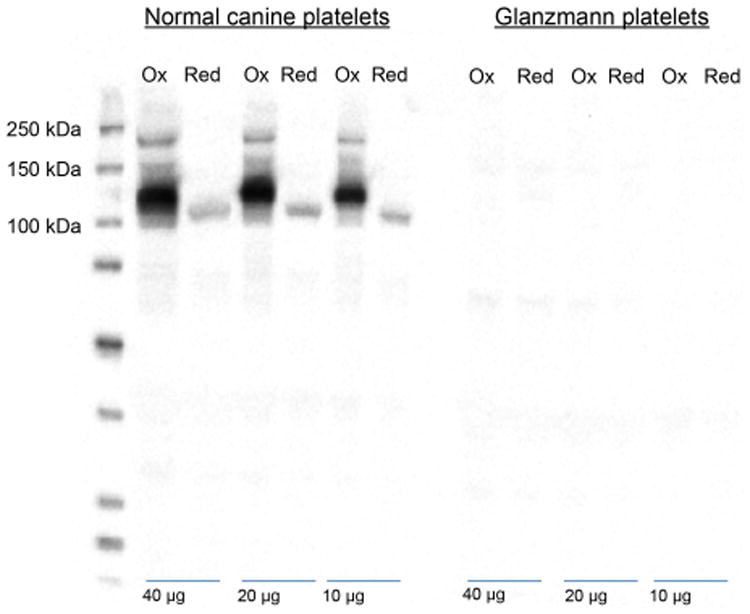Figure 1. Antigenic specificity of 2F9.

Resting platelets from normal and Glanzmann thrombasthenia (GT) dogs were lysed and 40, 20 and 10 μg were subjected to 10% sodium dodecyl sulfate-polyacrylamide gel electrophoresis under non-reducing (Ox) and reducing (Red) conditions and then transferred onto a polyvinylidene difluoride membrane which was probed with 2F9 and detected with a goat anti-murine horseradish peroxidease antibody and enhanced chemiluminescence substrate. Note that no bands are observed in the GT platelet lanes indicating that 2F9 binds either GPIIb or GPIIIa. The prominent band at 124 kDa under non-reducing conditions (and broad band ranging from 110 to 145 kDa is most consistent with 2F9 binding GPIIb. The faint 108-kDa band under reducing conditions probably represents a small amount of GPIIb adhered to GPIIIa despite the presence of EDTA in the reaction conditions. If 2F9 recognized GPIIIa, a band should be present at 100 kDa under both non-reducing and reducing conditions (Boudreaux & Catalfamo, 2001).
